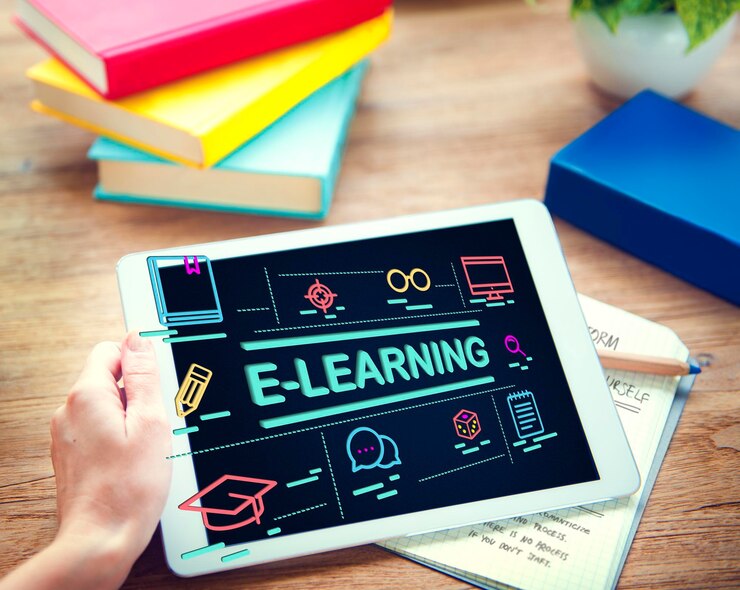Imagine you’re in a classroom where the teacher just delivered a lecture. But after the lecture, you notice that only 20% of the students actually understood the content. A few “sort-of” understand but can’t fully connect the dots in their head. Another group of students remember only bits but not enough to make complete sense. One or two students might be absent. And the rest are just pretty much clueless!
How would you rate the efficiency of such a classroom?
We’re thinking probably not that high.
Well, this is very much a reality for college students on the daily. Traditional classrooms have a one-size-fits-all approach where a standard lecture and standard book are presented to all students, regardless of their academic or personal backgrounds. And what’s worse? They’re all somehow expected to perceive them the same way!?
How does an art-loving student and a math-loving student see equations and numbers the same way?
That’s not something that can simply be taught.
We need a system that supports individual growth and considers unique learning behaviors.
What is Adaptive Learning?
Now that we agree that traditional learning models are insufficient and inefficient, we can start looking for solutions – and this gives rise to adaptive learning.
Adaptive learning means providing students with the right learning tools and materials to help them make sense of concepts. This model considers their unique learning behaviors and individual schedules, and can even help college students with learning disabilities.
Of course, the concept of adaptive learning isn’t really new. It just means that all students should get individualized instructions and resources to help them fully grasp textbook concepts. In fact, 1-on-1 tutoring already kind of follows a similar model.
But how can you implement adaptive learning in educational institutions where classrooms have at least 20-25 students each?
Well, we have one word for you: technology.
Online learning platforms for students like SimpliTaught use AI and machine learning to help educators and institutions provide personalized learning experiences to college students.
How Does Adaptive Learning Work?
Adaptive learning tailors study materials to suit each student’s specific learning behaviors, but how?
Let’s take the example of an eLearning platform for students. Online learning for students incorporates technologies like artificial intelligence and machine learning to adapt and personalize. AI models can be used to provide smart content recommendations to students, while machine learning models observe student learning behaviors. Doing so allows them to adjust study materials according to individual student needs. Plus, they might also be able to provide personalized feedback and identify learning gaps. Overall, though, the point is that they allow the system to adapt to fit each student precisely. And since technology is involved, it doesn’t add any unnecessary burden on educators either – so, win-win all around!
Benefits of Adaptive Learning
To understand the benefits of adaptive learning, let’s discuss its impact on college students.
So, there’s a concept in psychology called the “zone of proximal development.” It basically tries to bridge the gap between current and potential ability – this is essentially the difference between what you can do on your own vs. what you can achieve with just a little extra help. So, It suggests that students learn best when the “task” is just beyond their current level of understanding – which is exactly what adaptive learning does! It gives students enough “boost” to drive them towards more challenging concepts.
Besides this, we’ve also listed a few benefits of adaptive learning for higher education to help you understand how it’s useful for college students:
- Students feel more in control because they’re not competing with their fellows. They can take their time to understand concepts and focus on thriving instead of struggling to survive till the next semester.
- Students are more motivated and engaged with the content when they’re able to make sense of it.
- Educators receive real-time feedback based on how students respond to different learning resources, which means they can improve courses to further support students in the following semester.
- Personalized learning helps students study faster, which saves a lot of their time.
- Adaptive learning technology allows for on-demand differentiation, which isn’t really possible in a traditional classroom.
Conclusion
To sum up, adaptive learning is key to addressing the inefficiencies of existing learning models, aka traditional classrooms. Fortunately, most educational institutions and educators are more than open to adopting personalized and adaptive learning strategies. In fact, use cases of AI and machine learning in education have already demonstrated high potential for improving learning outcomes. So, the question isn’t why adaptive learning is important but how educational institutions can implement adaptive learning to benefit higher education.
SimpliTaught is one of the best online learning platforms for students, and it uses AI and ML to support college students. It delivers adaptive learning experiences to enhance their understanding of core concepts and supplement their learning curves. Get in touch with us to improve student retention at your institution and help more students graduate on time!

